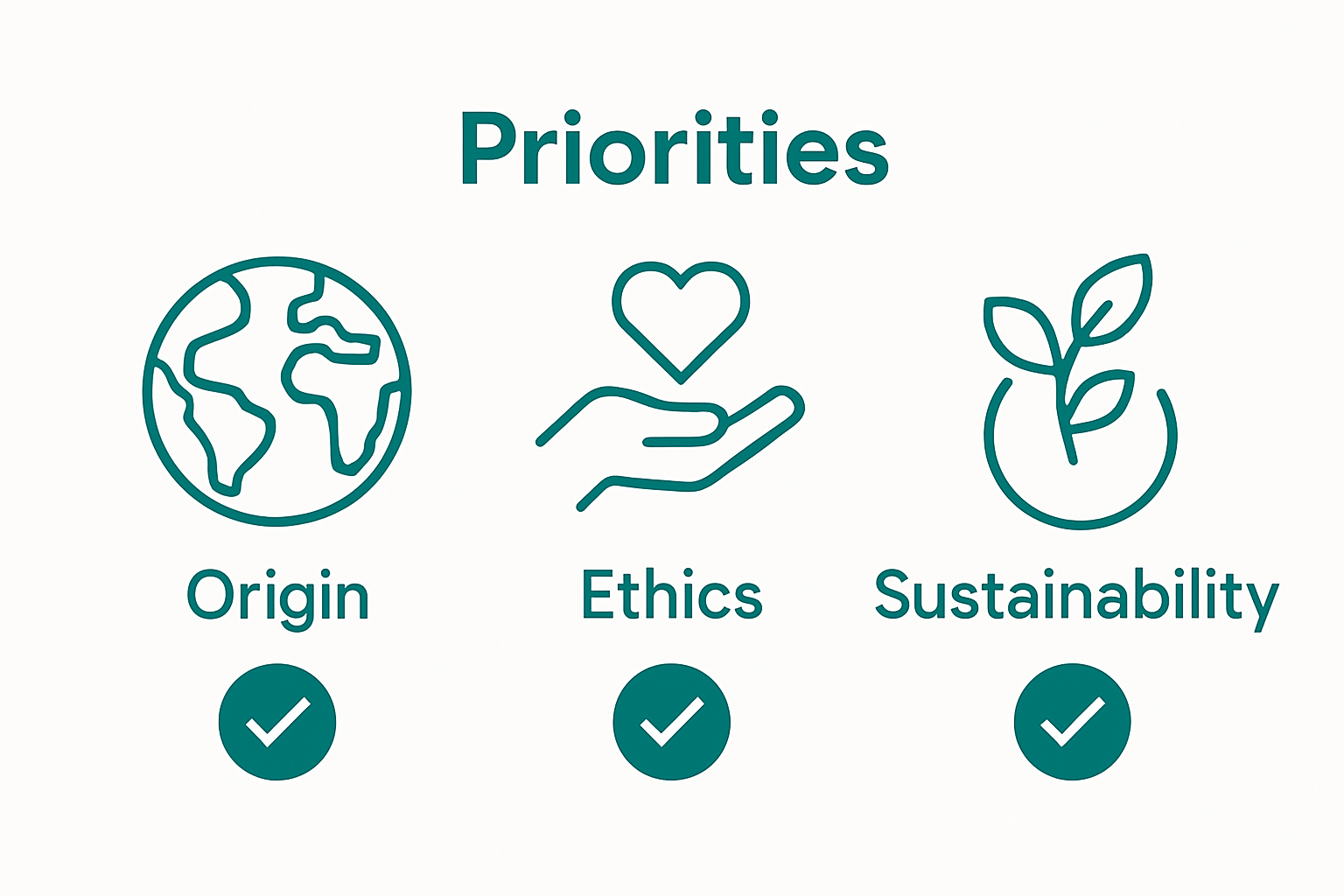-
Shop
- Advanced Technologies
- Arts, Crafts & Hobbies
- Back to School
- Bathroom
- Best-Sellers
- Car Accessories
- Clothing
- Dating & Social Skills
- Digital Resources
- Budgeting & Saving
- Dating & Social Confidence
- Emotional Intelligence
- Entrepreneurship & Business Growth
- Financial Independence
- Financial Mindset & Psychology
- Goal Setting
- Halloween Digital Collection
- Kitchen & Cooking
- Leadership
- Mindfulness
- Motivation
- Nutrition & Healthy Eating
- Positive Thinking
- Productivity
- Self Confidence
- Sleep Improvement
- Smart Amazon Shopping
- Stress Management & Relaxation
- Wellness & Self-Care
- Yoga & Mind-Body Practices
- Education & Learning
- Family & Parenting
- Fashion
- Alexander McQueen
- Bags
- Bags & Wallets
- Balenciaga
- Belts
- Blazers
- Blouses & Shirts
- Bottega Veneta
- Brunello Cucinelli
- Burberry
- Chanel
- Chloé
- Dior
- Dolce & Gabbana
- Dresses
- Etro
- Fendi
- Gucci
- Hats & Hair Accessories
- Hoodies & Sweatshirts
- Jacquemus
- Jewelry
- Jil Sander
- Jimmy Choo
- Keychains
- Kiton
- Luggage
- Luggage Bags
- Men's Fashion
- Miu Miu
- Off-White
- Outerwear
- Prada
- Rick Owens
- Saint Laurent
- Shoe Accessories
- Shoes
- Skirts
- Socks & Tights
- Sunglasses
- Sweaters & Cardigans
- The Row
- Tom Ford
- Tops & Shirts
- Valentino
- Valentino Garavani
- Versace
- Vivienne Westwood
- Watches
- Fashion Accessories
- Furniture
- Gadgets
- Health & Beauty
- Health & Wellness
- Home & Garden
- Home Supplies
- Kids & Babies
- Kitchen
- Lighting
- Nike
- Patio, Lawn & Garden
- Personal Growth
- Personal Style & Fashion
- Pet Care
- Pet Supplies
- Pets
- Sport & Outdoors
- Super Deals
- TikTok Growth & Monetization Mastery
- Travel
- Wealth
- Wealth Building
- YouTube Shorts Best-Sellers
What is Product Sourcing? Understanding Its Importance

Every product on a store shelf has a supply story behind it and sourcing is the move that shapes what shoppers actually see. Nearly 58 percent of consumers care about transparency in how products are sourced which stuns many business owners who still treat sourcing as just a paper-pushing task. The biggest surprise is that sourcing is not only about finding the cheapest supplier but can transform a company’s profits and even spark stronger connections with customers who care about where their purchases come from.
Table of Contents
- Defining Product Sourcing: What It Means
- The Importance Of Product Sourcing For Consumers
- How Product Sourcing Works: The Process Explained
- Key Concepts In Product Sourcing: Terms To Know
- Real-World Applications Of Product Sourcing In Retail
Quick Summary
| Takeaway | Explanation |
|---|---|
| Product sourcing is strategic, not transactional | Businesses should view sourcing as a critical process for supplier selection, focusing on long-term relationships and quality products. |
| Consumer demand for transparency is rising | Shoppers prioritize understanding product origins, ethical production, and sustainability, influencing their purchasing decisions. |
| Sourcing impacts cost, quality, and value | Strategic sourcing can lead to better pricing and higher product standards, benefiting consumers and businesses alike. |
| Supplier evaluation is essential | Successful sourcing requires thorough assessment of supplier capabilities, quality, and reliability before selection. |
| Local sourcing offers multiple benefits | Adopting local sourcing strategies enhances product freshness, reduces carbon footprints, and builds consumer trust. |
Defining Product Sourcing: What It Means
Product sourcing represents a critical strategic process where businesses identify, evaluate, and select suppliers to acquire goods or services needed for their operations. At its core, product sourcing goes beyond simple purchasing by focusing on finding the most suitable vendors who can provide high-quality products at competitive prices.
Understanding the Fundamental Concept
Product sourcing involves a comprehensive approach to procurement that requires careful analysis and decision making. Companies engage in this process to secure materials, components, or finished products from external suppliers, ensuring they meet specific quality standards, pricing requirements, and business objectives. According to Kent State University’s procurement resources, sourcing is fundamentally about locating and selecting businesses based on predetermined criteria.
The strategic nature of product sourcing encompasses several key considerations:
- Identifying potential suppliers who can meet production needs
- Evaluating vendor capabilities and reliability
- Negotiating pricing and contract terms
- Assessing product quality and consistency
- Managing supply chain risks
Strategic Implications for Business Operations
Effective product sourcing plays a pivotal role in a company’s overall competitive strategy. By carefully selecting suppliers, businesses can optimize their cost structures, improve product quality, and enhance their ability to respond quickly to market demands. As research from Yale University highlights, sourcing requires specialized expertise in both product knowledge and purchasing processes.
Companies that master product sourcing can achieve significant advantages, including reduced operational expenses, improved product innovation, and more flexible supply chain management. The process demands a sophisticated understanding of market dynamics, supplier capabilities, and the specific requirements of the products being sourced.
Whether a small startup or a large multinational corporation, organizations must approach product sourcing with strategic intent, recognizing it as more than a transactional activity but a critical component of their overall business success.
The Importance of Product Sourcing for Consumers
Product sourcing plays a crucial role in shaping consumer experiences, perceptions, and purchasing decisions. Beyond simply acquiring products, modern consumers are increasingly interested in understanding the origin, quality, and ethical considerations behind the items they buy.
Consumer Transparency and Product Origin
Today’s shoppers are more informed and conscientious than ever before. They seek detailed information about product origins, manufacturing processes, and the environmental and social impact of their purchases. According to research from Penn State Extension, 58% of consumers prioritize transparency in product sourcing, linking local sourcing with reduced environmental impacts and improved product traceability.
Key consumer considerations in product sourcing include:

- Understanding product manufacturing locations
- Evaluating ethical production practices
- Assessing environmental sustainability
- Verifying quality and safety standards
- Determining fair compensation for workers
Economic and Quality Implications
Consumers recognize that product sourcing directly influences product quality, pricing, and overall value. When businesses invest in strategic sourcing, they can offer products that meet higher standards while potentially providing more competitive pricing. Intelligent sourcing allows companies to balance cost-effectiveness with quality, ultimately benefiting the end consumer.
Moreover, consumers are increasingly willing to support businesses that demonstrate responsible sourcing practices. Research indicates that many shoppers are prepared to pay premium prices for products that align with their values, demonstrating a significant shift in purchasing behavior driven by ethical and sustainable considerations.
The connection between product sourcing and consumer satisfaction is complex and multifaceted. By prioritizing transparency, quality, and ethical practices, businesses can build trust, enhance brand reputation, and create more meaningful connections with their customer base.
How Product Sourcing Works: The Process Explained
Product sourcing is a systematic and strategic approach that businesses use to identify, evaluate, and select suppliers for acquiring goods or services. The process involves multiple intricate stages designed to ensure businesses obtain high-quality products that meet their specific requirements while maintaining cost-effectiveness.
Initial Supplier Identification and Evaluation
According to MIT Procurement resources, the product sourcing process typically begins with comprehensive research and supplier discovery. Businesses start by generating a list of potential suppliers through various channels such as industry networks, trade shows, online directories, and professional recommendations.
The initial evaluation phase involves critical assessments of potential suppliers based on several key criteria:
- Supplier’s production capabilities
- Quality of products or services
- Pricing and cost structures
- Manufacturing and delivery timelines
- Compliance with industry standards
- Financial stability and reputation
Strategic Negotiation and Selection
Once potential suppliers are identified, businesses engage in a structured selection process that goes beyond simple price comparisons. This stage involves requesting detailed proposals, conducting thorough background checks, and negotiating terms that align with the company’s strategic objectives.
Companies typically utilize structured approaches like Requests for Information (RFI), Requests for Quote (RFQ), and Requests for Proposal (RFP) to gather comprehensive information. These tools help organizations make informed decisions by comparing multiple aspects of potential supplier offerings, not just pricing.
The final selection process considers multiple factors, including product quality, supplier reliability, production capacity, technological capabilities, and alignment with the company’s long-term business strategy. Successful product sourcing requires a nuanced approach that balances immediate operational needs with future growth potential.
This table highlights the main stages in the product sourcing process and describes the key activities involved in each step.
| Stage | Description |
|---|---|
| Supplier Identification | Research and generate a list of potential suppliers through industry networks, trade shows, and directories |
| Supplier Evaluation | Assess production capabilities, quality, pricing, timelines, and reputation |
| Proposal Requests and Comparison | Use RFI, RFQ, and RFP tools to gather and compare detailed supplier information |
| Negotiation | Negotiate terms including pricing, contract details, and alignment with business strategy |
| Final Selection | Select suppliers based on quality, capacity, reliability, and strategic alignment |
| Ongoing Supplier Management | Continuously monitor supplier performance and maintain effective relationships |
Key Concepts in Product Sourcing: Terms to Know
Product sourcing involves a complex landscape of specialized terminology that professionals use to communicate effectively about procurement strategies, supplier relationships, and operational processes. Understanding these key terms provides crucial insights into the intricate world of strategic purchasing and vendor management.
Core Procurement Terminology
According to Columbia University’s Finance Training, professionals utilize specific language to describe various aspects of the sourcing process. These terms help organizations communicate precise requirements, expectations, and strategic approaches to acquiring goods and services.
Essential product sourcing terms include:
- Request for Information (RFI): Preliminary document used to gather general information about potential suppliers
- Request for Quote (RFQ): Formal document soliciting pricing details from vendors
- Request for Proposal (RFP): Comprehensive document detailing specific project requirements and evaluation criteria
- Category Management: Strategic approach to organizing and managing groups of related products and services
- Supplier Diversity: Practice of working with vendors from varied backgrounds and ownership structures
Strategic Sourcing Vocabulary
Beyond basic terminology, strategic sourcing involves understanding nuanced concepts that drive effective procurement. These terms represent sophisticated approaches to vendor selection, relationship management, and organizational purchasing strategies.
Key strategic concepts encompass understanding the difference between transactional purchasing and strategic sourcing. While traditional purchasing focuses on immediate product acquisition, strategic sourcing involves long-term relationship building, comprehensive vendor evaluation, and alignment with broader organizational objectives.
Professionals in product sourcing must develop a comprehensive vocabulary that reflects the complexity of modern procurement processes.
The table below summarizes essential product sourcing terms and their definitions, providing clarity on key procurement language used throughout the sourcing process.
| Term | Definition |
|---|---|
| Request for Information (RFI) | Preliminary document used to gather general information about potential suppliers |
| Request for Quote (RFQ) | Formal document soliciting pricing details from vendors |
| Request for Proposal (RFP) | Comprehensive document detailing specific project requirements and evaluation criteria |
| Category Management | Strategic approach to organizing and managing groups of related products and services |
| Supplier Diversity | Practice of working with vendors from varied backgrounds and ownership structures |
Real-World Applications of Product Sourcing in Retail
Product sourcing transforms theoretical strategies into practical business operations, particularly within the retail sector. Retailers leverage sophisticated sourcing techniques to optimize product selection, manage costs, and meet evolving consumer expectations across various market segments.
Local and Sustainable Sourcing Strategies
According to Kansas State University’s Rural Grocery Initiative, businesses are increasingly adopting innovative sourcing models that prioritize local and sustainable product acquisition. These strategies not only support regional economies but also respond to growing consumer demand for transparency and ethical purchasing.
Key benefits of localized sourcing include:
- Reduced transportation costs and carbon footprint
- Enhanced product freshness and quality
- Direct support for local and regional producers

- Increased consumer trust and brand loyalty
- Greater supply chain resilience
Strategic Supply Chain Management
Modern retailers recognize that effective product sourcing extends far beyond simple purchasing. It involves complex supply chain management that balances multiple objectives simultaneously. Companies must navigate intricate networks of suppliers, manage potential risks, and maintain competitive pricing while ensuring product quality and consistency.
Successful retailers develop robust sourcing strategies that integrate advanced technologies, data analytics, and strategic partnerships. By continuously analyzing market trends, consumer preferences, and supplier capabilities, businesses can create dynamic sourcing approaches that adapt quickly to changing market conditions.
These real-world applications demonstrate that product sourcing is a critical business function, requiring sophisticated skills, strategic thinking, and a comprehensive understanding of global and local market dynamics.
Elevate Your Shopping Experience with Trusted Product Sourcing
Are you looking for high-quality fashion, accessories, or tech gadgets but feel concerned about unreliable suppliers and inconsistent product quality? As highlighted in our article, effective product sourcing is essential for getting dependable products and real value for your money. At mrs.mattie.com, we are committed to transparent sourcing, vetted quality, and customer satisfaction so you never have to worry about what you buy next.

Experience the benefits of carefully sourced merchandise today. Shop new arrivals and popular deals on mrs.mattie.com. Take advantage of secure payments, fast worldwide shipping, and dedicated customer care. Make your next purchase with confidence. Visit mrs.mattie.com now and see how seamless product sourcing supports your perfect shopping journey.
Frequently Asked Questions
What is product sourcing?
Product sourcing is the strategic process by which businesses identify, evaluate, and select suppliers to acquire goods or services needed for their operations. It focuses on finding vendors that can provide high-quality products at competitive prices.
Why is product sourcing important for businesses?
Effective product sourcing is crucial as it allows companies to optimize costs, improve product quality, enhance supply chain management, and respond quickly to market demands. It plays a significant role in a company’s overall competitive strategy.
How does consumer transparency affect product sourcing?
Consumer transparency influences product sourcing as shoppers increasingly seek information about product origins, quality, and ethical considerations. Businesses that prioritize transparency and ethical sourcing practices can build trust and enhance their brand reputation.
What are some key terms related to product sourcing?
Key terms in product sourcing include Request for Information (RFI), Request for Quote (RFQ), Request for Proposal (RFP), category management, and supplier diversity. Understanding these terms helps professionals communicate effectively about procurement strategies.
Recommended
Was this article helpful?
Yes
No









Leave a comment